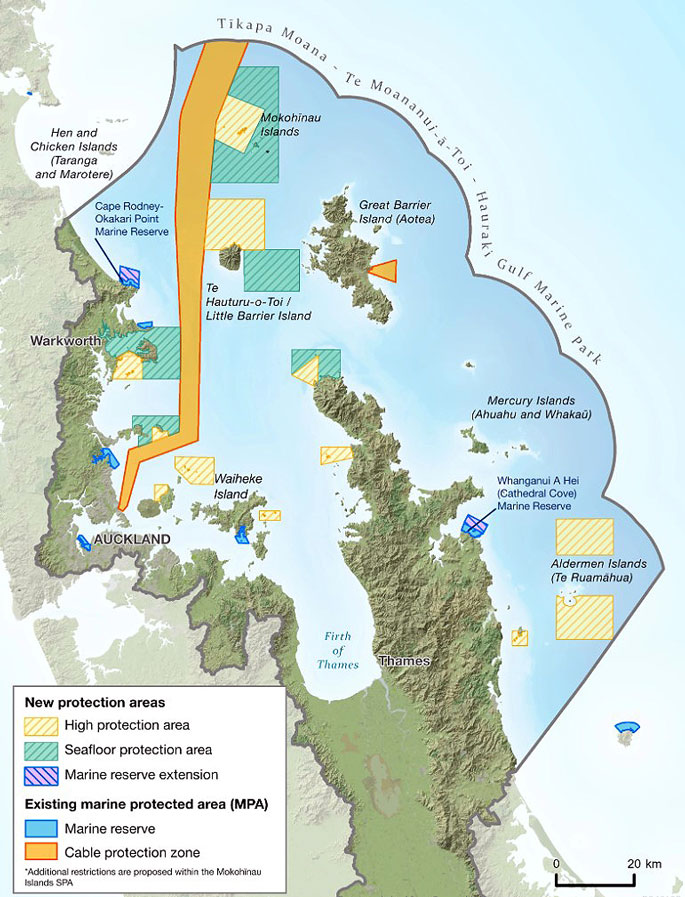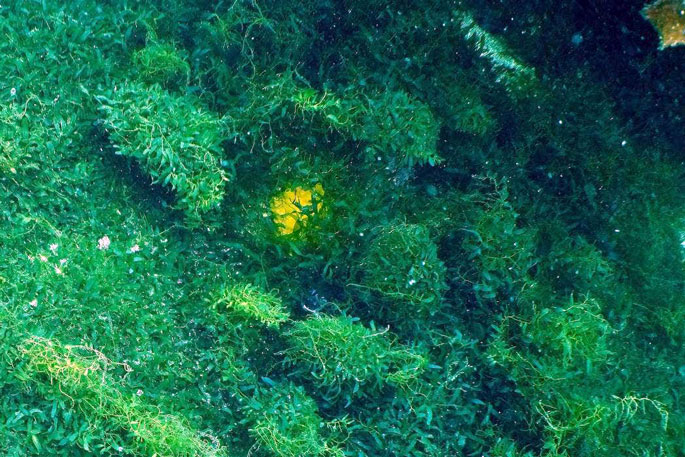The Hauraki Gulf could become an underwater cemetery unless action is taken to improve environment protection in the area, an open letter to the government is warning.
With the support of the Greens, Forest and Bird, Kelly Klink (on behalf of Ngāti Rēhua), the Mussel Reef Restoration Trust, and Sue Neureuter (custodian of the Noises), signatories called on the incumbent Government to pass the Hauraki Gulf Marine Protection Bill, protect 30 per cent of the ocean surrounding New Zealand, and ban bottom trawling in the Hauraki Gulf.
The State of our Gulf 2023 report, released in August, revealed mass mortalities of fish, shellfish and seabirds are likely to become increasingly common due to the effects of climate change.
The waters of the gulf are also expected to get warmer, murkier, more acidic and more contaminated.
“In the final few weeks of the previous Parliament, the Hauraki Gulf/Tipaka Moana Marine Protection Bill passed its first reading and was referred to Select Committee,” the letter reads.
“We urge the incoming Government to continue to progress this Bill, and take further steps as the evidence and our communities demand.”
 New marine protection areas to be established in the Hauraki Gulf. Photo: Department of Conservation.
New marine protection areas to be established in the Hauraki Gulf. Photo: Department of Conservation.
The Hauraki Gulf/Tikapa Moana Marine Protection Bill would see two existing marine reserves extended, while 12 high protection areas and five seafloor protection areas will be created.
The new high protection areas (HPAs) wouldn’t allow commercial or recreational fishing, but will allow for customary practices of tangata whenua.
“We have legislation at present which has existed for 20-odd years and empowers an entity to produce reports every few years, to basically tell us how much worse things are getting,” says Greens Auckland Central MP Chlöe Swarbrick.
“It is abundantly clear to the average New Zealander that things are not working. That's why we’ve seen over the past several years there's been massive mobilisation from communities, iwi and hapū that have just got on with it and do it themselves.
“The point of [the letter] is to showcase the strength of those community voices.”
Ngāti Paoa have taken action by placing a rāhui (restriction) on Waiheke Island, forbidding boats and other sea vessels from disturbing the seabed or anchoring within 1 nautical mile (1.8 kilometres) of Thompson's Point or Onetangi bay, where an outbreak of caulerpa has been identified.
Ngāti Paoa chairperson Herearoha Skipper says the situation is “really bad”.
“It is absolutely mind-blowing on how far it has spread, and it has grown,” she says.
Klink told Stuff the tribunal claim was made in order to ensure a tīkanga response to caulerpa that properly involved mana whenua was followed.
 Greens Auckland Central MP Chlöe Swarbrick said it was clear the current law was failing. Photo: Robert Kitchin/Stuff.
Greens Auckland Central MP Chlöe Swarbrick said it was clear the current law was failing. Photo: Robert Kitchin/Stuff.
“Our whole mamae [pain] about why we’re doing this is because we’ve been in this situation for two years,” she says.
Klink says caulerpa is growing at Aotea Great Barrier Island, at “ground zero” around Blind Bay, to the point where people could see it floating in the water, and at low tide you could see it en masse growing on the rocks.
“What we want to see...is a tīkanga approach that upholds the mauri of the moana.”
Klink says MPI’s proposed approach of suction dredging holds a large risk of significantly damaging the seabed.
The invasive seaweed was touched on quite heavily in the report due to its threat as a serious marine pest.
Environmental reports don’t usually use strong wording, but this one speaks of the “coming storm” and urges readers to help “increase the resilience of the Gulf”.
Swarbrick says the incoming government has an obligation to support the bill, and to invest resources into local initiatives to save the Gulf.
“We have to hold the government accountable to their rhetoric on localism. There's a really big song and dance about the need to divest resources back down to the most appropriate level with our local communities, with people on the ground who know what they’re doing.”
 Caulerpa on Great Barrier Island. Photo: Glenn Edney.
Caulerpa on Great Barrier Island. Photo: Glenn Edney.
“There is no greater opportunity presented, than to better resource the work that is already happening with incredibly passionate, well-researched folks who have proof of concept in being able to do these things when it comes to the Hauraki Gulf.”
Swarbrick says “a bit of a billion dollars” was spent on eradicating Mycoplasma Bovis, compared to “scraping a few million” on eradicating caulerpa.
“Scientists are making [it] abundantly clear [caulerpa] is the greatest threat they have seen to our ocean ecosystems.”
Andrew Baucke, Auckland Operations Director for the Department of Conservation, says work in the Hauraki Gulf has been a large point of focus lately.
“DOC has worked with Fisheries New Zealand to develop the proposals for marine protection that are being progressed in parliament in the Hauraki Gulf/Tīkapa Moana Marine Protection Bill,” he says.
“This work included scientific input on the habitats and biodiversity of each area; policy work to develop the new marine protection tools and ensure they fit within the wider legal context, and significant engagement and input from mana whenua, as well as input from stakeholders and the public.“
Baucke says alongside that, DOC is also working with mana whenua in maintaining the Gulf’s pest-free islands and areas of conservation land.
“We undertake on the water and shore education, advocacy and compliance patrols working closely with Fisheries New Zealand and the Maritime Police.”
 Andrew Baucke, Auckland Operations Director for the Department of Conservation, said work in the Hauraki Gulf had been a large point of focus lately. Photo: Abigail Dougherty/Stuff.
Andrew Baucke, Auckland Operations Director for the Department of Conservation, said work in the Hauraki Gulf had been a large point of focus lately. Photo: Abigail Dougherty/Stuff.
”We also undertake a variety of monitoring such as for fish and lobster species, benthic community composition as well as litter and biosecurity issues – often this work is done together with local government bodies.”
Earlier in the year, indications were that National supported the bill.
“There are so many things going on in there: the kina barrens, the habitat loss, the local fisheries depletion...,” Taranaki-King Country MP Barbara Kuriger said in Parliament in August.
“National strongly believes that action will need to be taken to address the environmental decline of the gulf, so we strongly support the intent of the bill.
“National may want to look at changing the high protection areas – location, amount – based on submissions to the select committee, and any scientific input that has been done or will be done in the future.”



1 comment
A point of fairness.
Posted on 28-11-2023 12:45 | By morepork
It is sad that the Gulf has come to such a pass and it seems that both Human and natural factors are combining against it. It is pretty obvious that fishing needs to be stopped for a while. "The new high protection areas (HPAs) wouldn’t allow commercial or recreational fishing, but will allow for customary practices of tangata whenua." I support customary practices for tangata whenua, as long as recreational fishing is also allowed. Only if it can be shown that tangata whenua would starve, and have no other resource, should they be given a special dispensation. You either stop fishing (for everybody) or you allow it. It seems the Gulf needs a rahui to recover and that should apply to everybody. Racism flares when one sector of the community is seen to be favoured over another.
Leave a Comment
You must be logged in to make a comment.